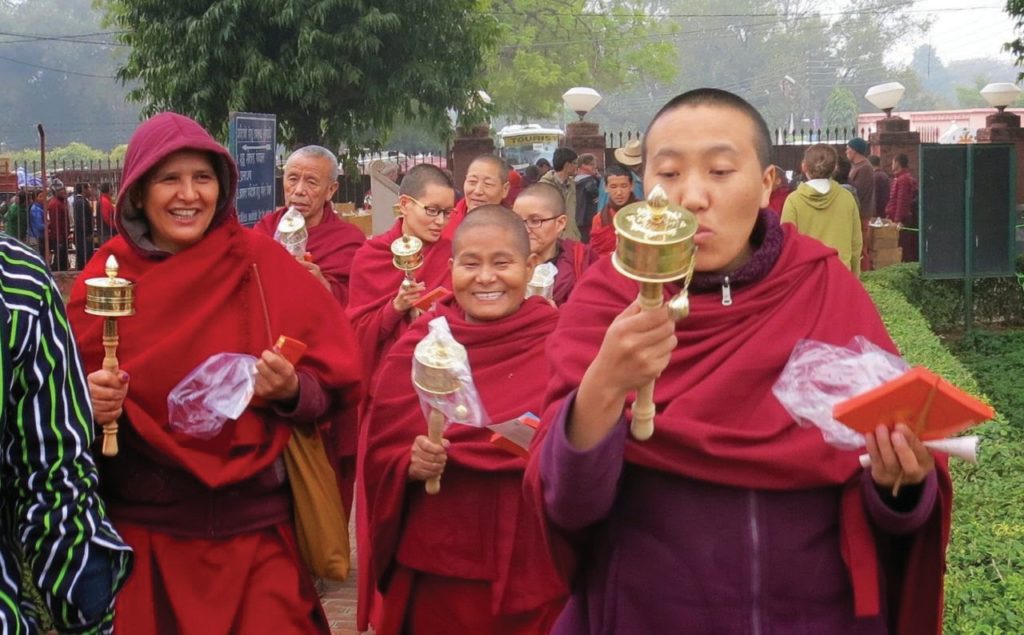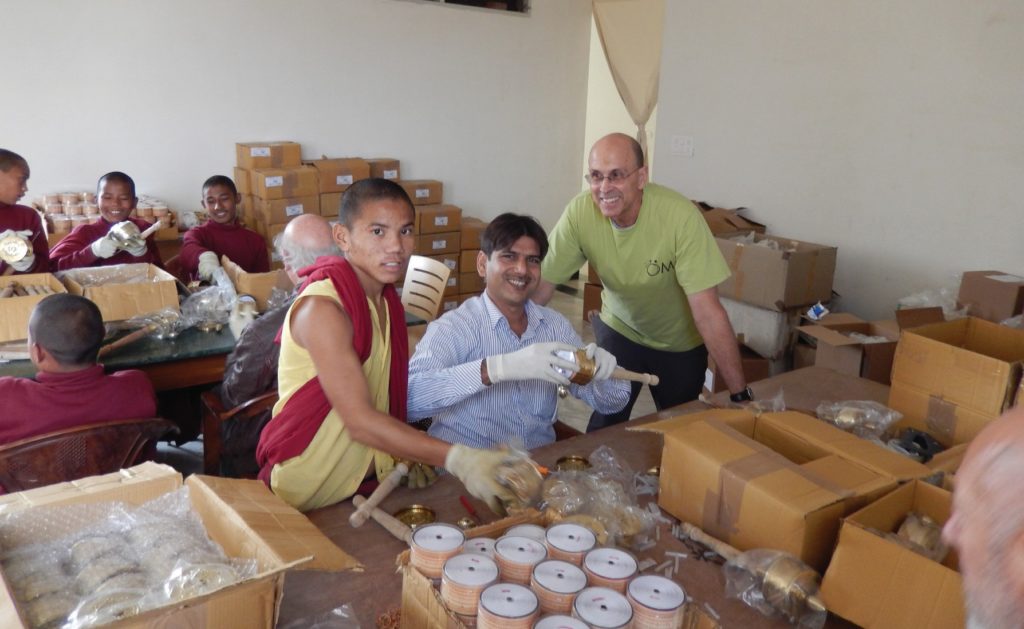Reports From The Mandala
Head Lama of TNMC

Grateful recipients of prayer wheels.
Over the past decade, the Nyingma Mandala of Organizations has expanded dramatically and in unexpected ways. Existing organizations have continued their activities on behalf of the Dharma and all sentient beings, typically intensifying their efforts. At the same time, at least nine new organizations have been formed, adding new dimensions to the founding Head Lama’s vision.
In the reports that follow, we lay out recent developments throughout the mandala and introduce the work of our new organizations. We start with the work of TNMC, where the Head Lama is most directly involved: Yeshe De, Odiyan, the Light Foundations, and the Sarnath Institute. From there we move on to describe the structure and mission of the Nyingma Association of Mandala Organizations (NAMO), founded in 2011.
We go on to lay out the recent work of the organizations that belong to NAMO. As a structure for presenting this wealth of developments, we start with the organizations located in Sonoma County, then turn to developments in Berkeley, and finally report on the expanding efforts of our international centers, under the direction of Nyingma Centers.

Installing empowered tsa-tsas at the rim-structure arbor
Ritual Art
Tsa-tsas
The connection between inner and outer realms is much closer than modern people realize, for we have lost the understanding of their interrelation and the ways to create inner and outer harmony. Many of Rinpoche’s projects, including tsa-tsas and prayer flags, make use of this knowledge to create symbols that have the power to restore balance to nature.
Tsa-tsas are clay disks in two dimensions or conical clay forms bearing the forms of Stupas. It has become traditional to make thousands of tsa-tsas as empowerments. In their conical form, they are empowered with mantric syllables and prayers inserted into their interior.
Rinpoche first made tsa-tsas in America in 1976, creating 100,000 disk-shaped tsa- tsas for the Odiyan Stupa. In 1985–86 he created a second set of conical tsa-tsas for the Stupa. Others have been buried around the world at earthquake-prone sites.

Finished tsa-tsas
In 2011 Rinpoche enlarged the original tsa-tsa to more than twice its original size, and also created a second shape with scores of small stupas on its surface. Work soon began on making 100,000 of these tsa-tsas, which are far bigger in size than those traditionally made in Tibet. Creation of these forms is a strong practice that concentrates and integrates energies of body and mind and produces a flow of blessings and merit.
To date we have produced 92,000 of the grand total of 108,000 tsa-tsas. We have sent 20,000 to the World Peace Ceremony and distributed 2,000 gold-leafed tsa-tsas to all our centers. Another 4,000, specially molded with a larger base, were prepared for the arbor that rings the Odiyan rim structure. Most of the rest are currently shelved at Vairochana Garden.
Prayer Wheels
As with all Dharma activities, making prayer wheels starts with the intention to benefit all sentient beings. Rinpoche has written, “Wherever prayer wheels turn, the mantras they set in motion can help ease pain, change consciousness, and transform negative energy into positive attitudes and thoughts.”
Today’s technology makes it possible to make prayer wheels that contain far more mantras and texts than was ever possible in Tibet. For this reason, “Tarthang prayer wheels” are highly prized by the Tibetans who receive them. This is especially true for our current prayer wheels, which use microfilm to contain the entire Kanjur (133 Tibetan volumes) on a single strip of 35 mm. microfilm approximately 20 feet long. These texts are then augmented by an additional paper roll of prayers and mantras.

Assembling prayer wheels at the Sarnath Institute